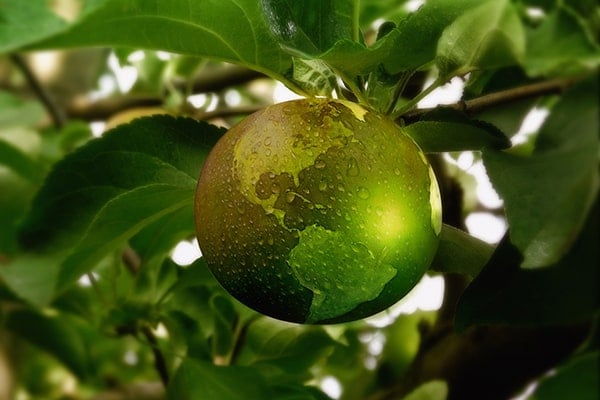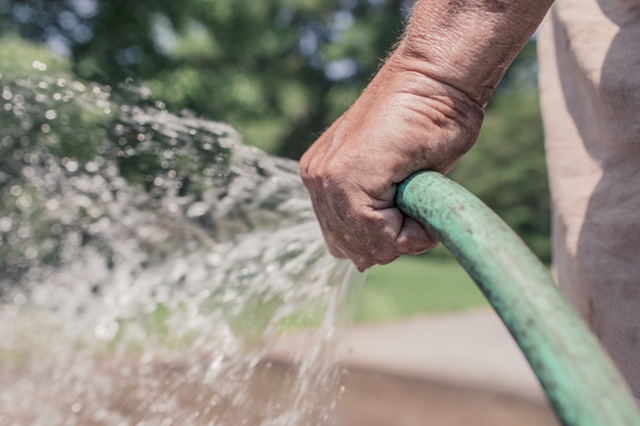
Reduce your carbon footprint, grow food without insecticides, reuse and recycle your own waste – there are many reasons for wanting to approach gardening in an eco-friendly and sustainable way. For every kilogram of fruit and vegetables that you grow and eat, you’ll use less energy and save two kilograms of carbon emissions.
Eco-friendly gardening is focused on using fewer pesticides, helping garden wildlife, reducing the amount of waste you create, minimising your use of tap water and using products that are sourced as locally as possible. Growing food organically is the start – with eco-friendly gardening methods and practices you will create a sustainable and environmentally responsible garden. But how? Check out our ultimate guide to eco-friendly gardening.
Planning an eco-friendly garden
An eco-friendly garden has several characteristics that sets it apart from other gardens. It uses as much rainwater as possible – so you need a water butt to catch your rainwater. It uses natural compost rather than manufactured fertiliser – which means growing your own compost heap. Plants are native and local. Plant diseases and pests are controlled via natural methods rather than with synthetic pesticides. Garden tools are ideally man-powered or are highly energy-efficient.
Of course, the bar need not be set that high – at least not to start with. It can be a wrench to stop using the convenience of an insecticide spray if you have an aphid invasion and reducing your usage of water and products can prove challenging in hot, dry summers. In which case, a quick spray and judicious use of the garden hose is entirely justified if it means saving months of hard work. The key is to think twice and find an organic alternative. Build up to it. Start with what you are comfortable with and learn from experience.
Some things take time, but are rewarding once you build them into your gardening and household routine. Find a space for a compost heap or bin[2] and try to figure out where the best place for a water butt is[3]. Once you’ve done that, you’ll be in a great position to take the next step.

Chemicals and eco-friendly gardening
Chemicals are convenient for gardeners who feel like they are fighting a never-ending war against pests and weeds. British gardeners use about 5,250 tonnes of pesticides a year[4] and much of that is used to maintain a perfect lawn by eliminating moss. Artificial fertiliser is also popular – a concentrated dose of food for your flower beds.
But there are alternatives and much of it comes down to good practice. Rotating your plants and creating good drainage conditions will keep your plants healthy. And when it comes to pests, there are natural alternatives such as salt spray, eucalyptus oil, mineral oil and chilli powder solution.
You can also use biological weapons: friendly worms such as nematodes[6] can attack pests and you can use many other types of insects and invertebrates that will combat infestations.
After using natural methods for some time, your garden will start to breathe again and you’ll get more of the wildlife visitors you like, rather than ones you don’t.
Making the most of water
In the hottest and driest times of year, gardening can use up to 70 percent of Britain’s water supply. The demand places a strain on water resources that can end up lowering the water table in affected areas. Yet there are many ways of reducing water consumption without sacrificing your garden.
First is to reduce your demand – use plants that require less water like lavender and palms which are able to withstand droughts. Mulch your flower beds to retain water in them. And check to see how moist your garden really is – the top layer of soil is not always a reliable indicator. If there is water at a spade’s depth then you have no need to add any more moisture. And of course it’s best to water your plants in the evening when less will be lost to evaporation.
When you do have to use water, try to make sure it’s naturally sourced. That water butt is a vital piece of equipment but there are other sources – you can re-use your washing-up water or bathwater (as long as you haven’t used bleach). Consider also creating a pond – it will make the air clearer and your plants will need less water as a result.

Planting the right plants
Larger trees are a great way of mixing up your garden, and they create much needed shade for your more delicate plants during the summer when they need some protection from strong sunlight to avoid wilting. Beeches, conifers and magnolias are all good choices.
There are many natural alternatives to pesticides and companion planting is top of the list. If you have flowers or fruit and vegetables that attract aphids or other pests, you can distract them with something even tastier, such as nasturtiums. By planting bright, colourful plants such as sunflowers or candytuft you’ll also attract ladybirds, which love to eat aphids. Of course, the ladybirds will also attract garden birds who will also find your slugs to be an appealing meal.

Other plants produce natural pesticides, like marigolds – an essential addition to any garden. By not using artificial pesticides, you’ll also see bees making a return to your garden[8].
Top Tips
- Equip your garden with a water butt and a compost bin
- Try to reduce your water use by not overwatering and picking plants that are not thirsty
- Don’t be afraid to use bathwater or washing up water.
- Use companion planting techniques to create natural pest control
- Find a source of biological pest controls such as nematodes
- Avoid using pesticides or water, but don’t be afraid of getting out the spray gun or hose in an emergency
Sources
[2] https://projects.truevalue.com/lawn_and_garden/environmentally_friendly/make_a_compost_bin.aspx
[4] https://www.rhs.org.uk/advice/profile?pid=817
[6] https://www.rhs.org.uk/advice/profile?pid=506
[8] https://www.treehugger.com/natural-sciences/sweet-news-organic-bees-are-thriving.html




